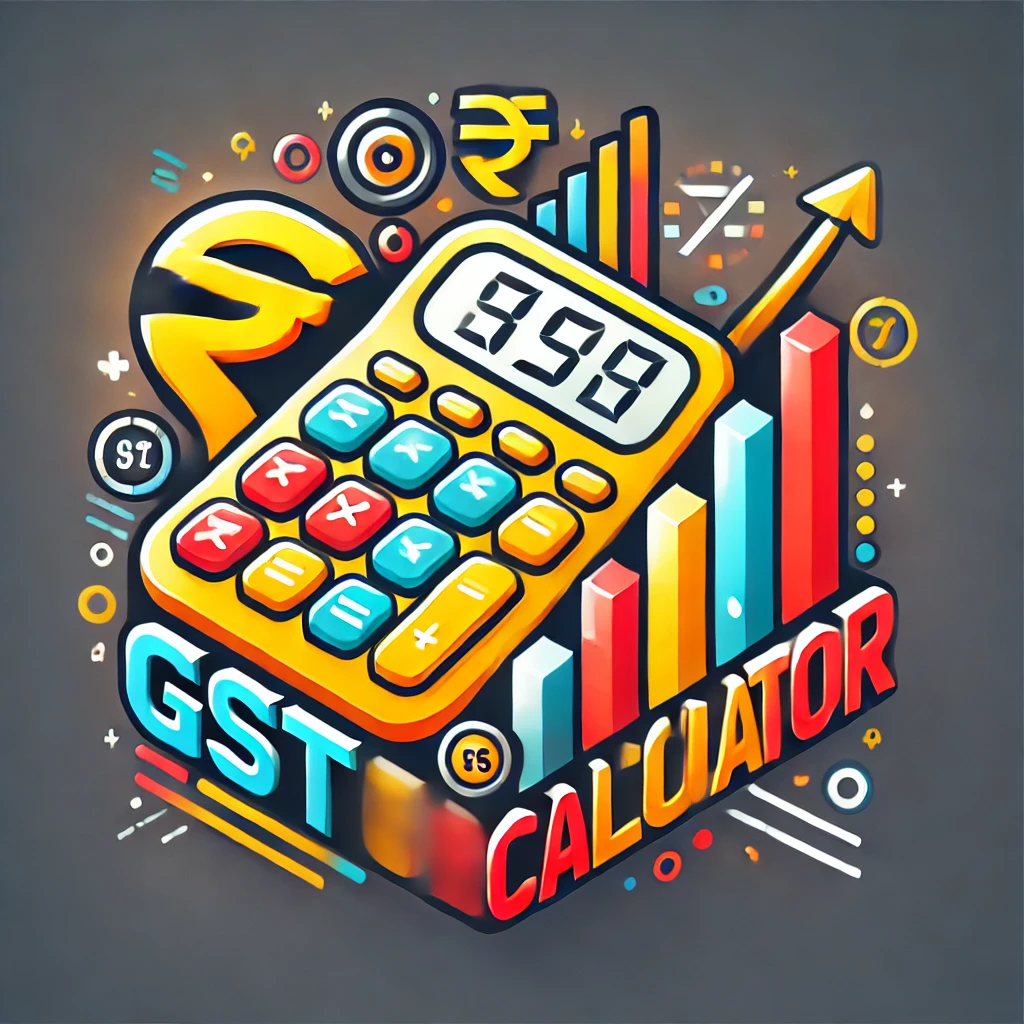GST Calculator
0
0
0
What is a GST Calculator?
A GST Calculator is a useful tool designed to help businesses and individuals compute the Goods and Services Tax (GST) accurately. It provides a quick and efficient way to determine the tax amount on goods and services based on the applicable tax rate.
With changing tax regulations, manually calculating GST can be time-consuming and error-prone. Using an online GST Calculator, you can instantly find the total tax amount and the final price of a product or service, ensuring compliance with taxation rules.
How Does a GST Calculator Work?
A GST Calculator works by taking the base price of a product or service and applying the relevant GST rate. It provides both the GST-exclusive and GST-inclusive price, helping businesses with billing and tax filing.
To calculate GST manually:
GST Amount = (Original Price × GST Rate) ÷ 100
For example, if the price of an item is ₹1,000 and the GST rate is 18%, the tax amount would be:
(1000 × 18) ÷ 100 = ₹180
So, the final price after adding GST would be ₹1,180.
Benefits of Using a GST Calculator
- Accuracy – Eliminates manual calculation errors.
- Time-Saving – Quickly calculates tax amounts.
- Tax Compliance – Ensures correct GST application.
- Easy Billing – Helps in generating invoices.
- Simplifies Accounting – Makes bookkeeping effortless.
GST Rates in India
India follows a multi-tier GST structure, with different tax rates depending on the product or service category. The primary GST slabs are:
- 5% GST – Essential goods and services.
- 12% GST – Processed food, mobile phones, etc.
- 18% GST – Most consumer goods and services.
- 28% GST – Luxury items and high-end products.
How to Use a GST Calculator?
Using a GST Calculator is simple and requires just a few steps:
- Enter the original price of the product or service.
- Choose the applicable GST rate (5%, 12%, 18%, or 28%).
- Click on the “Calculate” button.
- View the GST amount and total price instantly.
This tool is particularly beneficial for businesses, freelancers, and consumers looking to verify tax amounts before making a purchase.
GST Calculation Methods
There are two ways to calculate GST:
1. Adding GST to the Base Price
To determine the final price including GST:
Final Price = Original Price + GST Amount
2. Removing GST from Total Price
To extract GST from a price that already includes tax:
GST Amount = Total Price × GST Rate ÷ (100 + GST Rate)
For instance, if the total price of a product is ₹1,180, and it includes 18% GST:
GST Amount = 1180 × 18 ÷ (100 + 18) = ₹180
So, the base price before tax is ₹1,000.
Importance of a GST Calculator for Businesses
A GST Calculator plays a crucial role in financial management, ensuring businesses remain compliant with tax regulations. Key benefits include:
- Simplifies Tax Filing – Businesses can calculate tax liabilities accurately.
- Avoids Legal Issues – Ensures correct tax payments and compliance.
- Streamlines Accounting – Helps maintain clear financial records.
- Enhances Business Efficiency – Reduces time spent on tax calculations.

GST Calculation for Different Sectors
1. Retail and E-commerce
Retailers and online sellers use a GST Calculator to determine product pricing, ensuring correct tax amounts are included in invoices.
2. Freelancers and Service Providers
Freelancers, consultants, and service providers need to calculate GST on their invoices. A GST Calculator helps them apply the correct tax rate.
3. Manufacturing and Wholesale
Manufacturers and wholesalers rely on GST calculations for pricing, supply chain management, and tax compliance.
4. Real Estate and Construction
GST is applicable on property transactions. A GST Calculator helps determine the tax amount for property purchases and sales.
GST vs. Other Taxation Methods
Before GST, businesses had to deal with multiple indirect taxes like VAT, excise duty, and service tax. The introduction of GST simplified tax compliance by unifying these into a single tax system.
Advantages of GST Over Previous Tax Systems
- One Nation, One Tax – Eliminates cascading taxation.
- Transparency – Ensures fair pricing.
- Ease of Business – Simplifies tax compliance.
- Boosts Economy – Encourages trade and investment.
Common GST Calculation Mistakes and How to Avoid Them
- Applying Incorrect GST Rate – Always check the applicable tax slab.
- Ignoring GST on Discounts – Calculate GST on the final selling price.
- Misclassifying Goods and Services – Ensure correct tax categorization.
- Forgetting Reverse Charge Mechanism (RCM) – Some services require the buyer to pay GST instead of the seller.
Tips for Accurate GST Calculation
- Use a GST Calculator to avoid manual errors.
- Keep updated with the latest GST rules.
- Maintain proper records of tax invoices.
- Consult a tax professional for complex transactions.
Future of GST and Digital Taxation
With the increasing digitization of financial transactions, GST compliance is becoming more efficient. Government initiatives like e-invoicing, digital tax filing, and AI-driven compliance tools are simplifying the process.
Conclusion
A GST Calculator is an essential tool for businesses, freelancers, and consumers to compute GST accurately. By automating tax calculations, it saves time, reduces errors, and ensures compliance with tax laws.
Whether you’re a business owner or an individual, using a GST Calculator helps in better financial planning. Stay updated with GST rules, use digital tools, and ensure accurate tax calculations to manage your finances effectively.